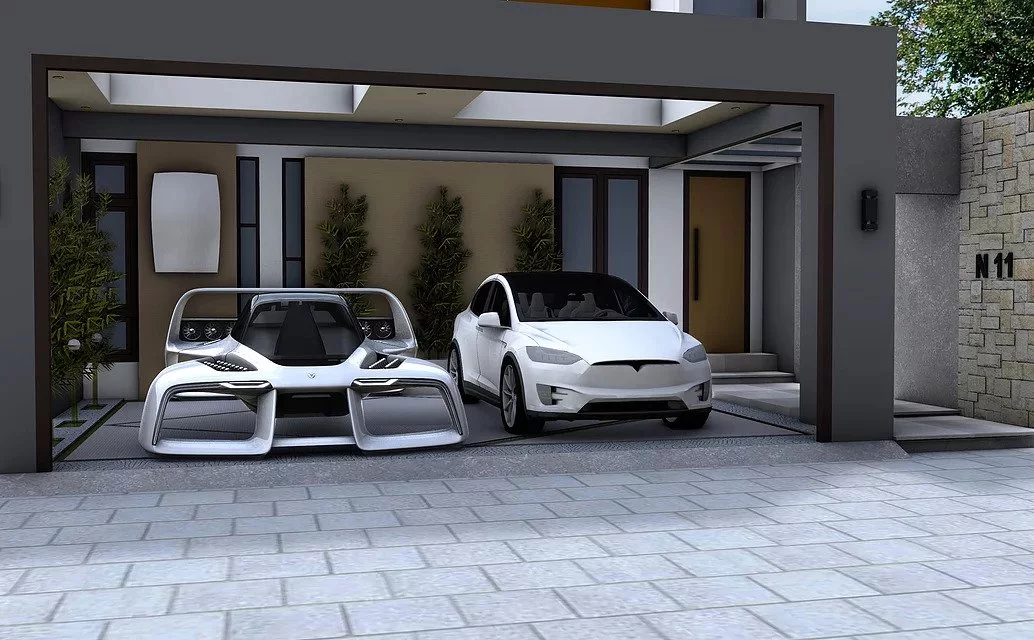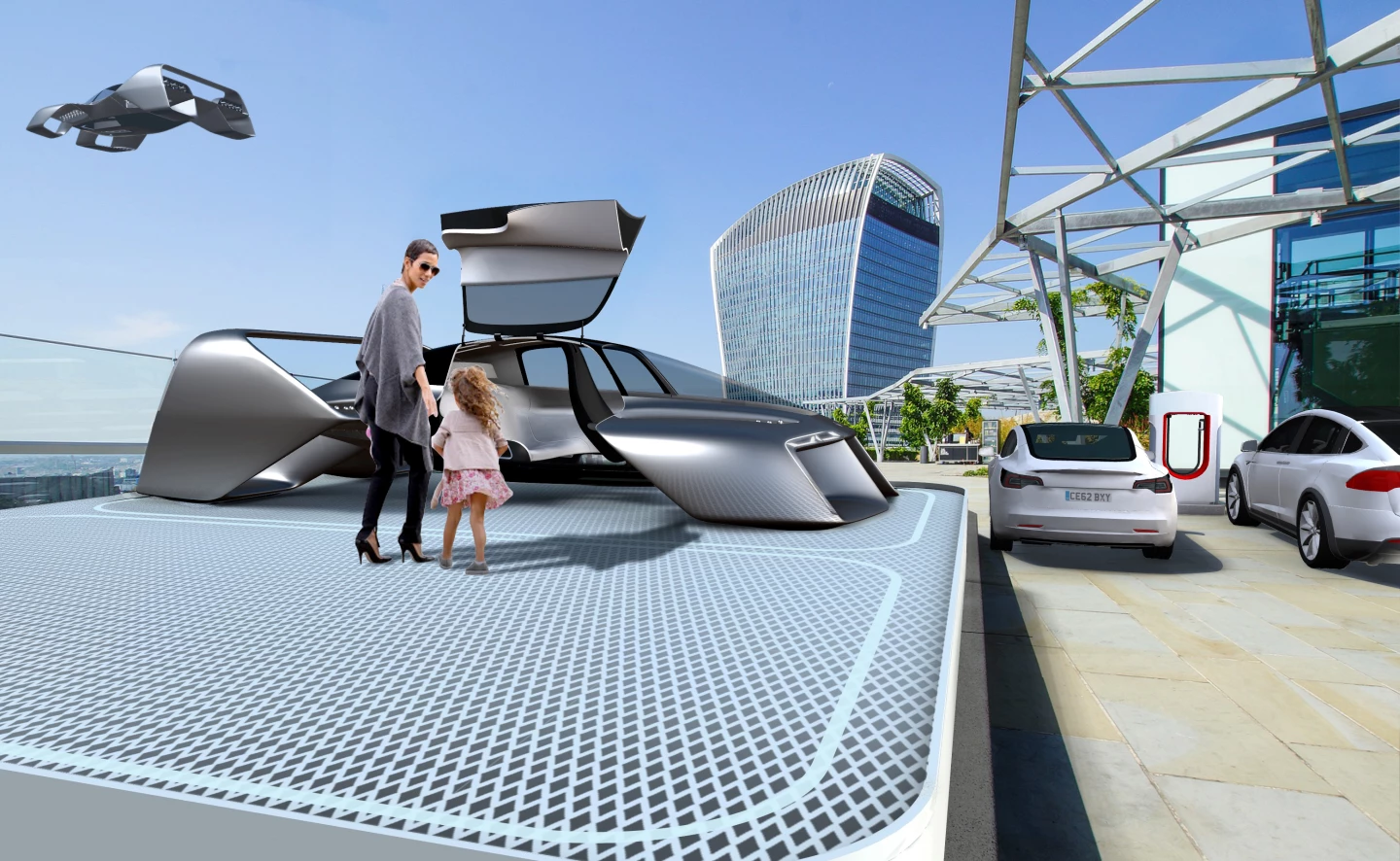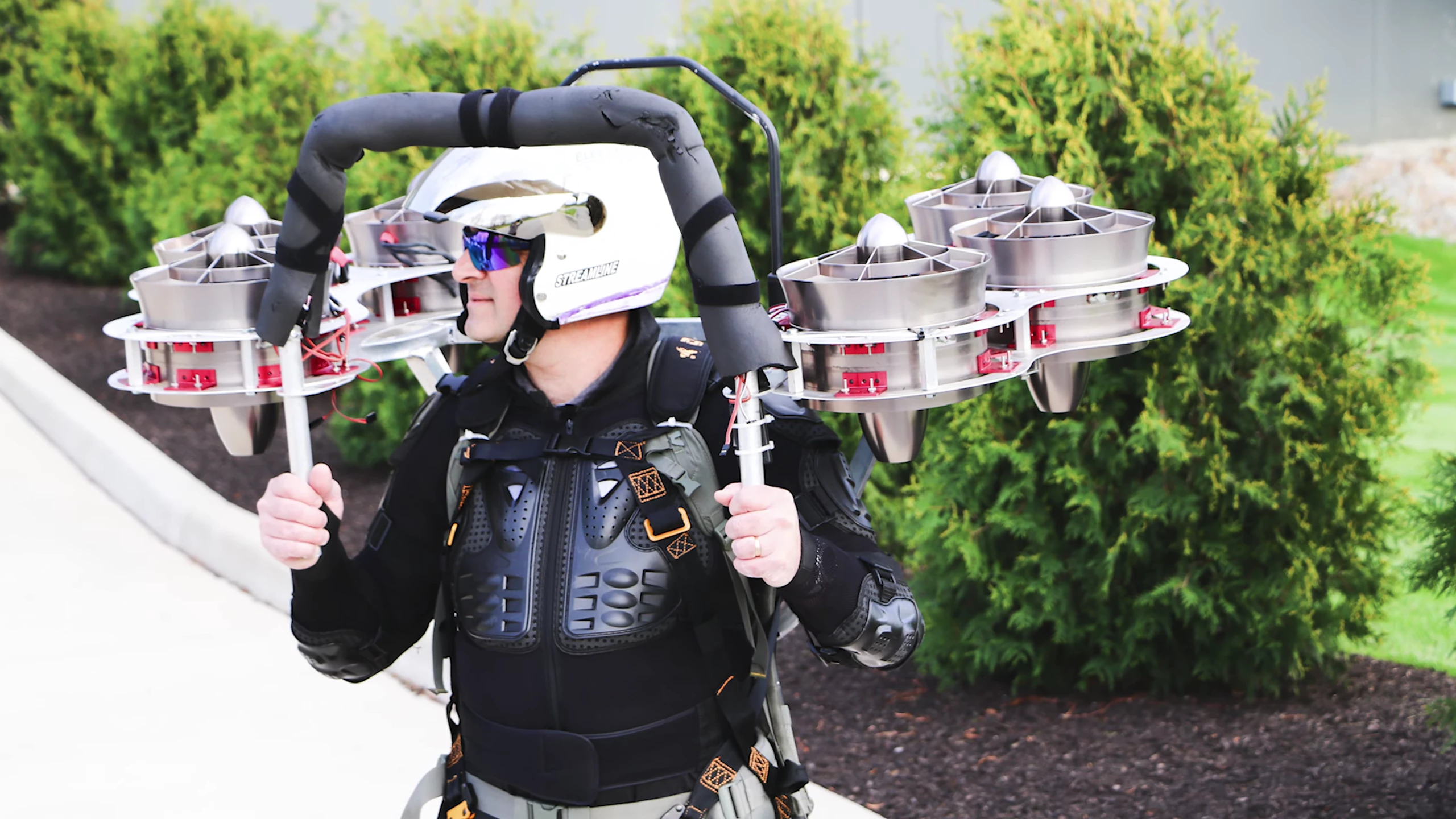An electric propulsion specialist and a supercar designer have partnered up on an eye-catching three-seat eVTOL, claiming 250-mph (400 km/h) top speeds and extraordinary 300-mile (483-km) range figures, as well as some extreme flight dynamics and some nifty ideas.
Pete Bitar has been working on vertical propulsion systems for decades now. He's got a DARPA contract to develop his electric jetpack designs, his Verticycle is a competitor in the GoFly personal flight challenge, and he's just won one of nine NASA "Future-Scaping Our Skies" awards for his work on ground infrastructure and air traffic control for the coming eVTOL age.
Now he's partnered up with automotive designer Carlos Salaff to start an eVTOL company. Salaff was behind the outrageous Mazda Furai concept, and has in more recent years been showing his own outrageous coach-built creations at events such as Pebble Beach.
The new company, Urban eVTOL, has released renders of its first aircraft, and it sure is a looker. The Leo Coupe is a three-seat lift-and-cruise design running 16 of Bitar's electric ducted fans for vertical lift, and several more at the rear for horizontal thrust.

Ignore the renders in this regard, Bitar tells us over a Zoom call from Indiana: "The images we've got there are our best-looking artwork, but they don't reflect the current thrust configuration. The Leo will run 16 10-kW vertical thrusters, each about 16 inches (40 cm) in diameter, making 120 pounds of thrust, much larger than the ones you see there. There'll be three in each of the forward banks and five in the rear banks, and the forward thruster array will use six 11-inch jets with turbine blades rather than propeller blades."
The exterior uses a double box-wing design, curling under at the front and over at the back, which Bitar says will be capable of fully supporting the Leo in horizontal flight once it's traveling at around 100 knots (115 mph, 185 km/h). Louvres or covers will likely close off the vertical lift ducts at speed, to reduce drag. The small wings might necessitate higher airspeeds for efficient flight, but they contribute to a big advantage on the ground: this thing not only looks like a flying hypercar, it's small enough to fit in a single car space.
That'll mean private owners can stow it easily in the garage, and it'll be able to land on pads much smaller than what most much larger air taxi designs will need. "We can land eight Leos in the footprint of one Joby," says Bitar, pointing out that if eVTOLs need to sit around and charge between flights, vertiports on top of parking garages are quickly going to run out of space if four or five large-winged eVTOLs are plugged in at once.

"The biggest danger with UAMs isn't having thousands of aircraft in the sky," says Bitar. "It's what you do when they're near the ground. I mean, what happens when you've got 20 aircraft trying to land at a vertiport, and you've only got 10 slots? Ground space will be at a premium when this market really starts kicking in, so a low footprint will become essential."
The Leo will run a 66-kWh battery system, split up physically into several units. "We've got two in the front, on the lower parts of the sides of the passenger compartment," says Bitar. "There are two underneath the back bench, and then the remainder of the battery pack is behind. That's why we run more vertical thrusters at the back; to counter that battery weight." In an air taxi configuration, the front packs would be treated mainly as reserves, and the rear packs would be swappable on the ground for quick turnaround.
Bitar says the relative light weight of the Leo, plus the efficiency of its ducted fans and high forward cruise speeds, will give it a surprisingly large range figure. "We're expecting an hour and 15 minutes, including about five minutes of vertical takeoff and landing, with reserves. With our high forward speed of 250 mph, you're looking at nearly 300 miles, or 450 kilometers, roughly, on a single charge. We've done the math on that. We've empirically tested the forward thrusters and the vertical thrusters, so we know what we're going to be burning. And that's running the vertical thrusters for as much as two or three minutes on takeoff and landing, to account for the forward speed we need."

The cabin places a pilot in front, on a chair suspended from the roof. This gives passengers a chance to enjoy the view through a transparent floor, which is partially there for the experience, and partially there so the pilot can actually see exactly where they're landing as they come down. "You see it in old helicopters, those big bubble cockpits, they used to be able to look down and see the ground coming up at them as they came in to land," says Bitar. "Oh, and the pilot seat is actually hung from a swivel, so if you've set an autonomous course, you can turn around and chat with the passengers in the back."
Urban eVTOL is developing an interesting landing gear solution called Cat's Paws, says Bitar, in conjunction with a major tire company. This would be a "variable geometry inflatable landing system" capable of cushioning a landing like a set of airbags, and even keeping the aircraft level on a slope. We'll bring you more about that when it's ready to go public.
On top of that, the Leo will run a ballistic parachute for last-ditch safety. "We're also talking to BRS right now about a ballistic rocket system on the bottom of the aircraft," says Bitar. "Something similar to what Bezos used to slow down his capsule right before it touched the ground. It's like a big airbag made purely out of air, that we could use in conjunction with the redundancy and the ballistic chute and the Cat's Paws to ensure a soft landing."
On the other end of the spectrum from safety is Bitar's hope that the compact Leo design will allow for some rather extreme "dynamic flight characteristics," that would give the pilot separate throttles for the horizontal and vertical thrust components. "Say I'm doing a hard bank and we're coming in really fast and I want to turn really hard, we could kick in the vertical thrusters to give me a really radical turn that'd be much tighter than my control surfaces could do by themselves. Or say I was in vertical flight and wanted to quickly climb, I could easily bring in that extra thrust component, since we're not tilting our thrusters."

Bitar says Urban eVTOL is planning to get a "flying frame" prototype built and into testing in 2022. The company is looking for investment to get subsequent prototypes built in full scale, complete with carbon fiber bodies, a process he expects will take around eight months between full funding and a first tethered flight.
As for commercialization: "Initially, we'll be looking at markets that require the least certification," says Bitar. "Probably some foreign markets, but also possibly some military for medevac and things like that. The kit built market is definitely an option, particularly if the United States comes up with a training program for these kinds of aircraft. We think we can get the price down below US$290,000, even with quantities under 100 units a year.
"It'll be a very simple semi-autonomous aircraft from a control standpoint, so it's not going to be difficult to fly. But in terms of certification, I'm not sure what category it falls under. It's multi-engine, sort of, but also fixed wing, sort of. But it's also sort of a rotorcraft, and powered lift. So getting pilots trained so they can kit-build the thing is a big question mark right now. That's going to be something for Tetra and the other folk too, particularly if you're outside the ultralight weight limit.
"So probably government customers will be our first round, but we will eventually look to achieve FAA type certification so we can make it a fully certified aircraft."

Bitar says all the vendors and components are already selected for prototyping, and he's looking into potentially building Urban eVTOL its own subscale wind tunnel for flight dynamics testing. He's certainly got the fans for it!
We'll bring you more on this design as it comes to hand, but it certainly looks more like a high-end hypercar for the skies than anything else we've seen, and if the company can prove its extraordinary range, speed and price claims, it's going to have a hot little product on its hands.
Source: Urban eVTOL











